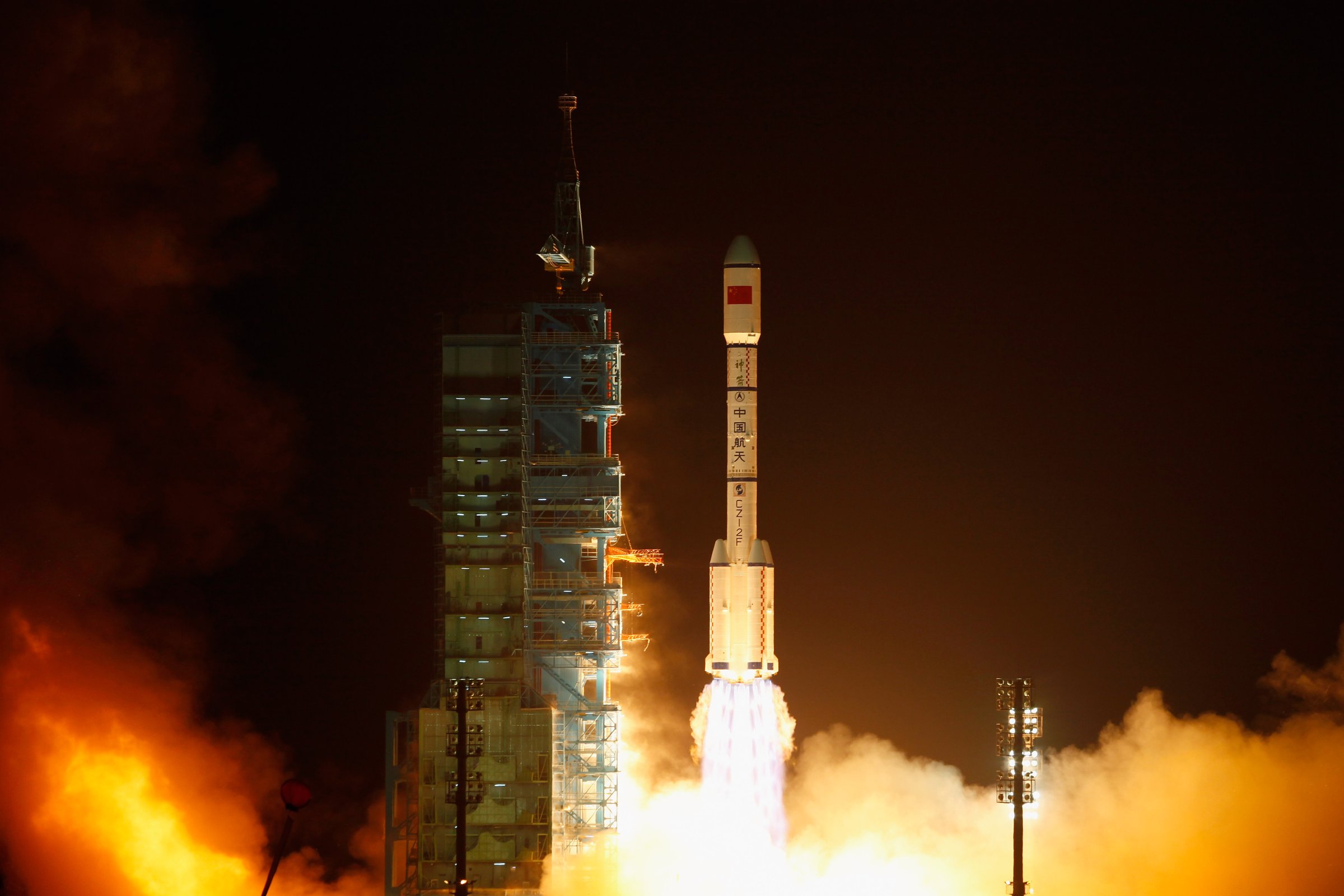
No day counts as a good day when an eight-ton Chinese space station falls on your head. If you’re like most people, you don’t give that danger a lot of thought, and the good news is, you don’t have to start now. Probably.
The dangers posed by an eight-ton Chinese space station have been much in the news of late, after Chinese officials admitted during a Sept. 14 press conference that its Tiangong-1 (Heavenly Palace) space station, launched in 2011, having “comprehensively fulfilled its historical mission,” is going to come crashing back to Earth sometime in 2017. Where exactly will it land? Well, hard to say. When exactly will the reentry happen? In the second half of the year—if it doesn’t happen earlier or later.
That’s a wee bit less precision than most people would like, but there are a few reasons not to panic. For starters, the station’s eight ton (7.25 metric ton), 34-ft. (10.3 m) size is small as these things go. NASA’s Skylab, which made its own uncontrolled reentry in 1979, was 82 ft. (25 m) long and weighed 77 tons (70 metric tons). Russia’s Mir space station was 100 ft. (30 m) long and weighed 125 tons (113 metric tons). The currently flying International Space Station is the length of a football field and weighs 1 million pounds—or 500 tons (453 metric tons). So a baby like Tiangong-1 should vaporize on reentry pretty easily.
The trick here is the “should” part. The Chinese spokeswoman herself hedged, promising only that “most parts of the space lab will burn up during falling.” The parts least likely to incinerate are the heaviest and densest ones, especially those that make up the engine.
The odds of any one person (or house or town) being in the debris trail are small, however. First, you don’t have to worry about 71% of the planet, since that’s the share of the surface that’s covered by water. Most of the remaining 29% is entirely uninhabited, with at least half of the world’s population living on just 10% of the land (or 2.9% of the the entire planet’s surface). Double that amount—to just 5.8% of the surface—and you take in three-quarters of the population. A direct hit on one of the major population centers—New York, Mumbai, Tokyo—would be a huge and deadly mess, but from space those are tiny targets.
Still, there’s a caveat. While it’s true that less than a third of the surface of the Earth is dry land, most orbits are designed so that they maximize the time they spend over those parts. NASA has always preferred to launch its crewed spacecraft at approximately a 28º inclination to the equator, ensuring that the ships pass as frequently as possible over the U.S. and within range of the web of tracking stations around the world. The International Space Station (ISS) flies at a 51º inclination, a concession to the station’s Russian partners who prefer that angle for the same homeland-centric reasons. China flies Tiangong at 43º. More land under the path of a ship when it’s healthy and flying means more land under the path when it’s wobbling and falling—even if the probability of a disaster remains vanishingly small.
The real question—the one China doesn’t want to answer—is how it got into this situation in the first place. It’s a matter the country had better address soon, however, given the launch of its similarly sized Tiangong-2 the very day after the Sept. 14 press conference. The world was supposed to have learned its lesson about space debris in the anxious weeks leading up to the Skylab reentry when everyone knew the ship was coming down soon, but nobody could say where. Ultimately the parts of Skylab that did survive reentry landed harmlessly in the Australian outback, a lucky break that easily could have turned out differently.
Russia disposed of the Mir in a much more controlled way in 2001, with three carefully timed firings of an on-board rocket engine which ensured a harmless splashdown of the remains in the deep waters of the South Pacific. NASA has a similar plan in place for the ISS when its useful life is over in ten years or so.
China, the betting is, will do the same when the time comes to dispose of Tiangong-2. But space travel is not supposed to depend on betting, and the country’s still-young space program had better up its game if it plans to continue playing in the cosmic big leagues.
More Must-Reads from TIME
- Donald Trump Is TIME's 2024 Person of the Year
- Why We Chose Trump as Person of the Year
- Is Intermittent Fasting Good or Bad for You?
- The 100 Must-Read Books of 2024
- The 20 Best Christmas TV Episodes
- Column: If Optimism Feels Ridiculous Now, Try Hope
- The Future of Climate Action Is Trade Policy
- Merle Bombardieri Is Helping People Make the Baby Decision
Write to Jeffrey Kluger at jeffrey.kluger@time.com